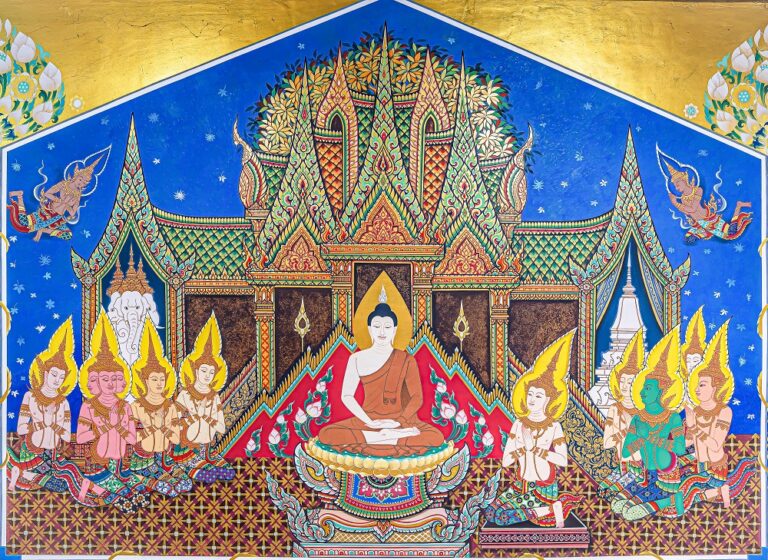
ABHIDHAMMA DESANA
The events shown in this mural occur directly after the Twin Miracle was performed.
The Buddha’s mother, Queen Maya, had been reborn in Tavatimsa Heaven as the Satusita Deva. Filled with compassion for her and all the devas, the Buddha ascended to this heaven to preach the Abhidhamma, a systematic teaching of the suttas, to them. The Abhidhamma is considered by Theravada practitioners to be the pure and literal expression of ultimate truth, in contrast to the more conventional and circumstantial suttas.
The Buddha sat on the yellow stone throne, and preached for three months. Three months is the duration of the typical rainy season in Southeast Asia, usually from July to October. During this time, Theravada practitioners historically observed a three-month annual retreat, called the Vassa, or “rain.” In English, this is sometimes referred to as the Buddhist Lent.
During Vassa, monks remain in one place, such as a monastery or temple, and may focus on intensive meditation. This practice began before the time of the Buddha. It was the custom of ascetics not to travel during the rainy season, to avoid harming the crops.
After three months, at the end of the rainy season, the Buddha asked Sakka, the king of Tavatimsa Heaven, for leave, and he returned to earth.
The Vassa retreat, still observed by Theravada monks today, is a time for intensive meditation and spiritual practice and shows the Buddha’s teachings on ethical conduct and compassion for all living beings.